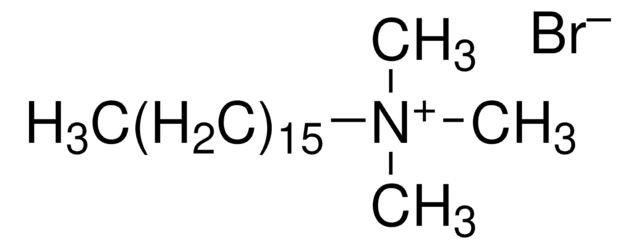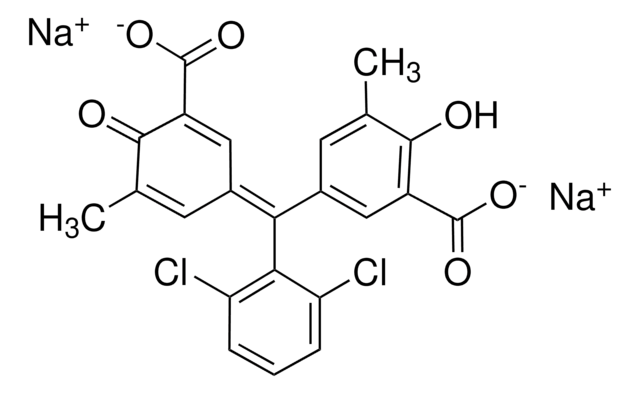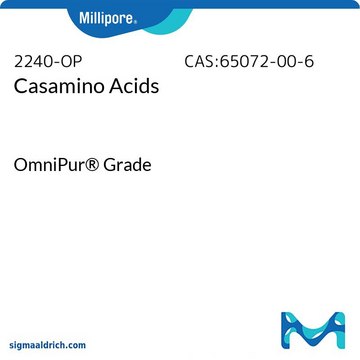199532
Chromeazurol S
Dye content 45 %
Synonyme(s) :
Chrome Azurol S, Mordant Blue 29
About This Item
Produits recommandés
Forme
powder
Niveau de qualité
Composition
Dye content, 45%
Technique(s)
microbe id | staining: suitable
Couleur
dark brown
Solubilité
water: 0.1%
λmax
458 nm
ε (coefficient d'extinction)
≥9000 at 424-436 nm in H2O at 0.03 g/L
≥9000 at 424-436 nm in H2O
Application(s)
diagnostic assay manufacturing
hematology
histology
Température de stockage
room temp
Chaîne SMILES
[Na+].[Na+].[Na+].Cc1cc(cc(C([O-])=O)c1O)C(=C2/C=C(C)C(=O)C(=C2)C([O-])=O)\c3c(Cl)ccc(c3Cl)S([O-])(=O)=O
InChI
1S/C23H16Cl2O9S.3Na/c1-9-5-11(7-13(20(9)26)22(28)29)17(12-6-10(2)21(27)14(8-12)23(30)31)18-15(24)3-4-16(19(18)25)35(32,33)34;;;/h3-8,26H,1-2H3,(H,28,29)(H,30,31)(H,32,33,34);;;/q;3*+1/p-3/b17-12-;;;
Clé InChI
FUIZKNBTOOKONL-NDOZRWCBSA-K
Vous recherchez des produits similaires ? Visite Guide de comparaison des produits
Catégories apparentées
Description générale
Application
Code de la classe de stockage
11 - Combustible Solids
Classe de danger pour l'eau (WGK)
WGK 3
Point d'éclair (°F)
Not applicable
Point d'éclair (°C)
Not applicable
Équipement de protection individuelle
dust mask type N95 (US), Eyeshields, Gloves
Faites votre choix parmi les versions les plus récentes :
Déjà en possession de ce produit ?
Retrouvez la documentation relative aux produits que vous avez récemment achetés dans la Bibliothèque de documents.
Les clients ont également consulté
Notre équipe de scientifiques dispose d'une expérience dans tous les secteurs de la recherche, notamment en sciences de la vie, science des matériaux, synthèse chimique, chromatographie, analyse et dans de nombreux autres domaines..
Contacter notre Service technique






